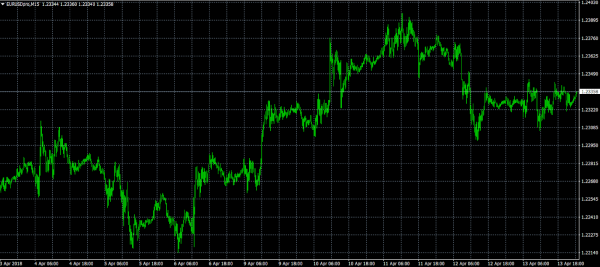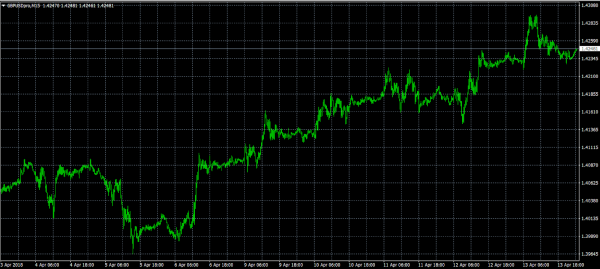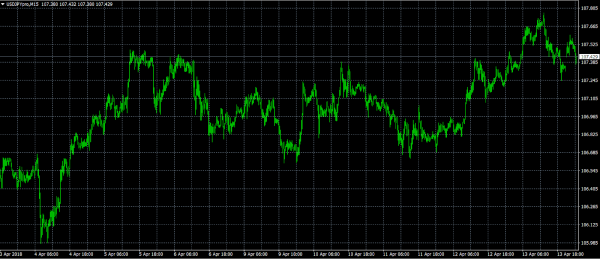Heading into the new trading week, investors across different asset classes feared that the U.S.-led strike on Syria would become the new catalyst to sell risk assets. However, Saturday’s operation, that also included the U.K. and France was a limited one, and intended to be a one-off as President Trump declared ‘mission accomplished’. Many feared the attack would probably lead to a broader confrontation, but the conducted strike was not strong enough to bring Russian retaliation. The limited reaction in currency markets on Monday shows investors are relieved somehow, and expect no significant escalation.
The fall in oil prices is another sign of relief, after the geopolitical tensions last week drove Brent to its highest levels since 2014. Another source of pressure came from U.S. energy companies; seven oil rigs were added in the week to 13 April, bringing the total count to 815, a level last seen in March 2015. Despite the 1% fall in early trading, I think there’s still a lot of risk premium in current prices, and with further ease in geopolitical tensions, I expect to see an additional drop below $70.
It’s going to be a busy week ahead for financial markets, specifically on the earning front, with about 60 S&P 500 companies due to report results. So far, 70% of companies that already reported actual results managed to beat Wall Street expectations on EPS. If the positive surprise didn’t diverge from current levels, there’s a high likelihood of companies reporting 20% growth in earnings. Tax cuts are the undoubtedly the key factor behind the expected earnings growth. Additional factors were also in play, including the dollar’s weakness which boosted multinational overseas earnings, and the rise in the price of oil, which is expected to boost earnings growth in the energy sector by 79%, according to FactSet.
With such a positive earning season and with better valuations compared to a year ago, there’s a good reason for the bulls to take over control. However, this also depends on how much noise we’ll have in the background,whether it is Russia-U.S. relations, Middle East geopolitics, trade tensions or higher inflation expectations; the list goes on.
There’s also a lot of data releases this week to attract traders’ attention. In the U.S., the economic calendar focuses on housing and manufacturing sectors, but retail sales figures released later today are likely to move the dollar the most. Chinese first quarter GDP results will be released on Tuesday and markets expect a 6.7% growth The global financial markets have a lot to ponder on Monday: Syrian airstrikes, corporate earnings and a few high-profile data releases from the world’s largest economy.
After a quiet European session, trading in North America opens with the New York Empire State Manufacturing Index. The monthly release, which is scheduled for 12:30 GMT, gauges business conditions in one of America’s most populous states. The April edition of the index is expected to show weakness to 20.1 from 22.5 in March. Nevertheless, a positive figure is normally considered bullish.
The Commerce Department will also report on retail sales at 12:30 GMT. The monthly report is widely considered to be one of the best gauges of consumer spending, which accounts for more than two-thirds of US economic output. Receipts at retail stores are forecast to rise 0.3% in March after falling 0.1% the month before. Excluding automobiles, the retail sales category likely rose 0.3%.
Sales are down in each of the last three months, capping off the worst stretch in over five years. Some analysts have expressed concerns over the health of the US economy as a result.
Commerce economists will also report on business inventories at 14:00 GMT. The monthly data set, which has direct implications on gross domestic product (GDP), is expected to show an increase of 0.5% for February.
The National Association of Home Builders (NAHB) will deliver its latest housing market index at 14:00 GMT. The gauge of homebuilder confidence is projected to hold at 70 for April.
In terms of monetary policy, Federal Open Market Committee (FOMC) member Raphael Bostic will deliver a speech at 17:15 GMT. Bostic was a member of the policy-setting committee that voted to raise interest rates last month. At least two more upward adjustments are expected this year.
EUR/USD
EUR/USD edged slightly higher on Monday, as the pair continued to recover from last Thursday’s swing low near 1.2300. The pair was last seen trading at 1.2336, having gained 0.1% from the previous close. EUR/USD faces interim support at 1.2290 and resistance up at 1.2370.
GBP/USD
Cable’s bullish upside faded on Friday, as the British pound fell from highs near 1.4300 US. However, the currency remains in a firm uptrend now that Brexit talks are mobilizing. GBP/USD was last seen trading at 1.4248. It faces immediate resistance at the 1.4300 psychological hurdle.
USD/JPY
The Japanese yen has been caught in a firm downtrend stretching back three weeks even as the dollar struggled to make gains against other currencies. USD/JPY rose 0.1% on Monday to 107.42. The pair is testing the 13 April high of 107.70. Immediate support is likely found at the 11 April swing low of 106.78.
YoY. Trade tensions will be an important factor to focus on over the coming quarters, but so far China continues to grow at healthy levels. Any upside surprise in China’s GDP could potentially send the Aussie higher.














